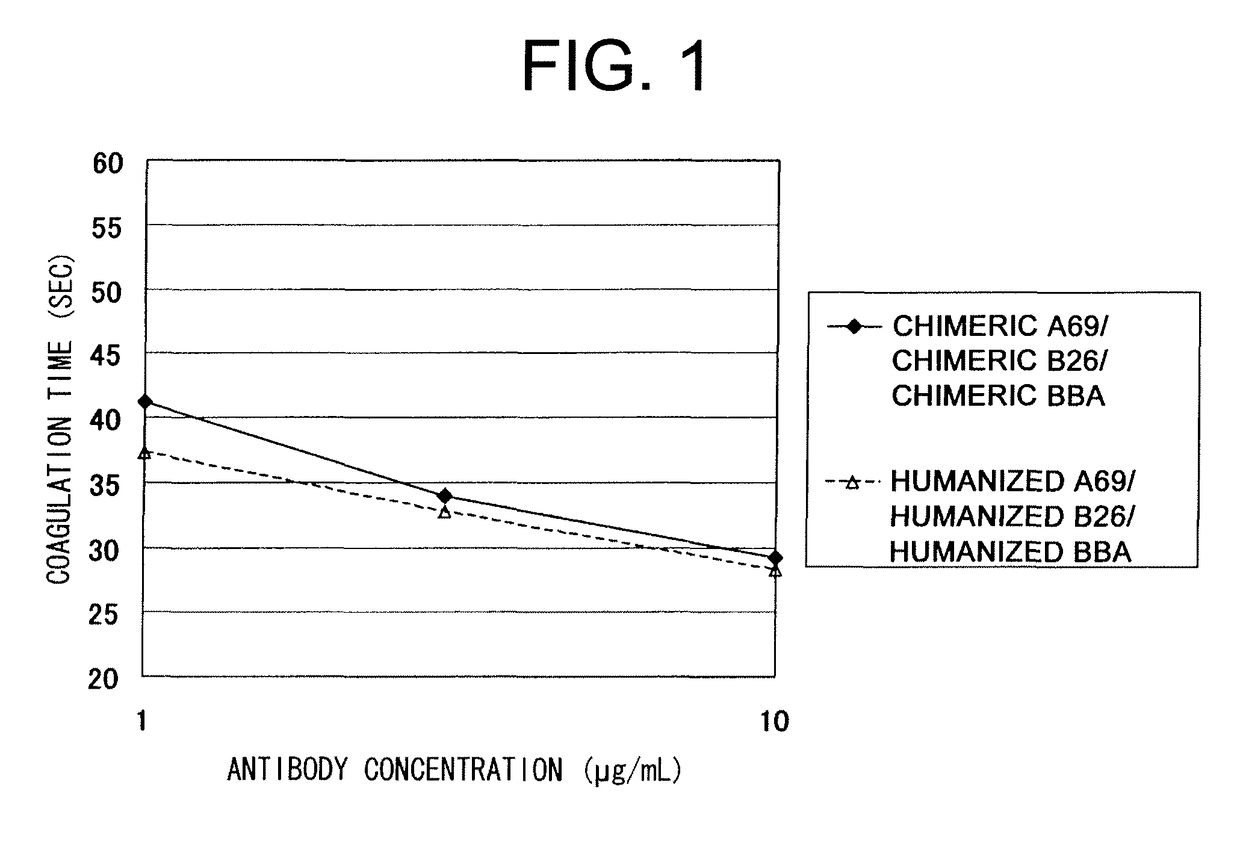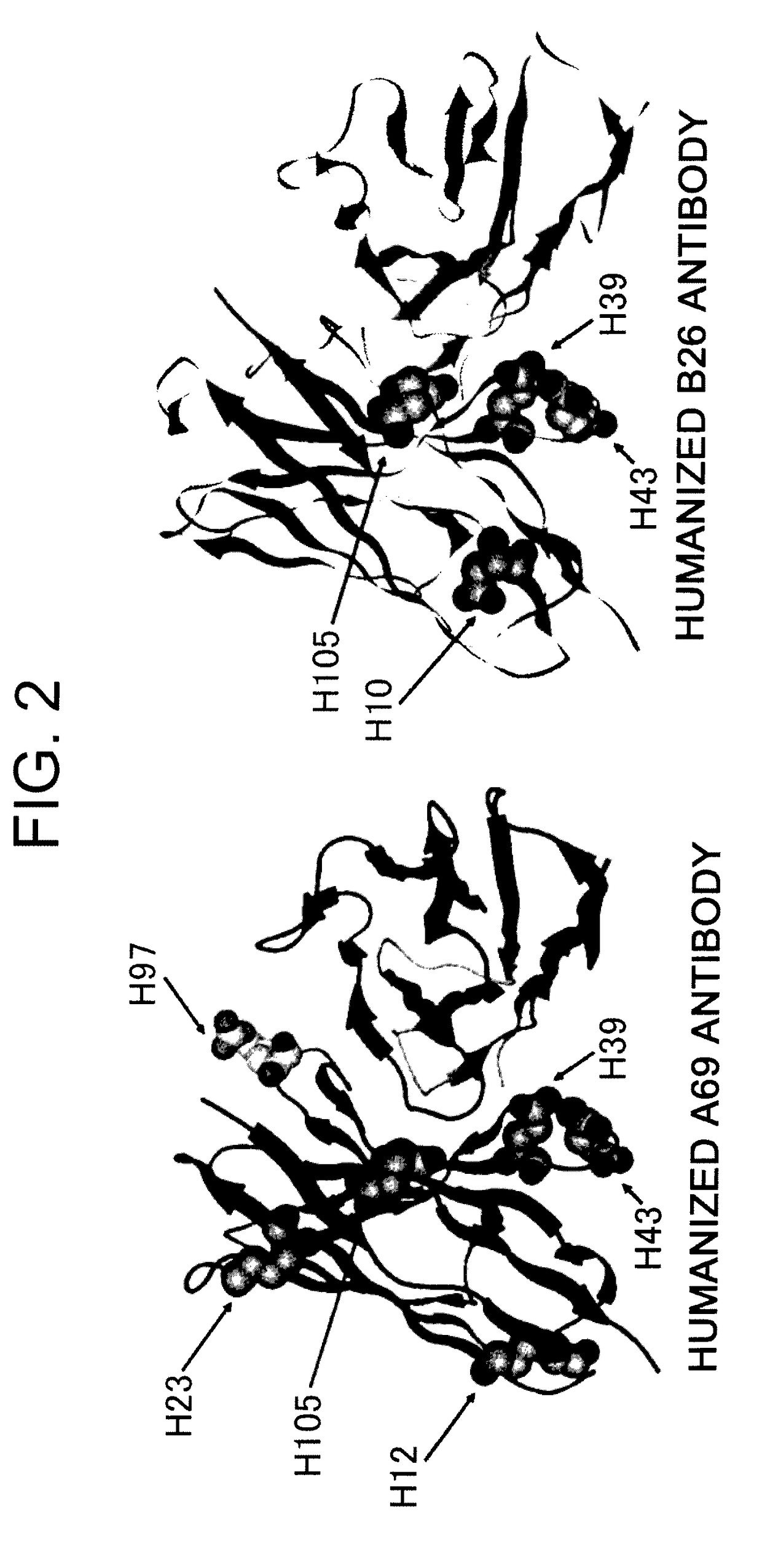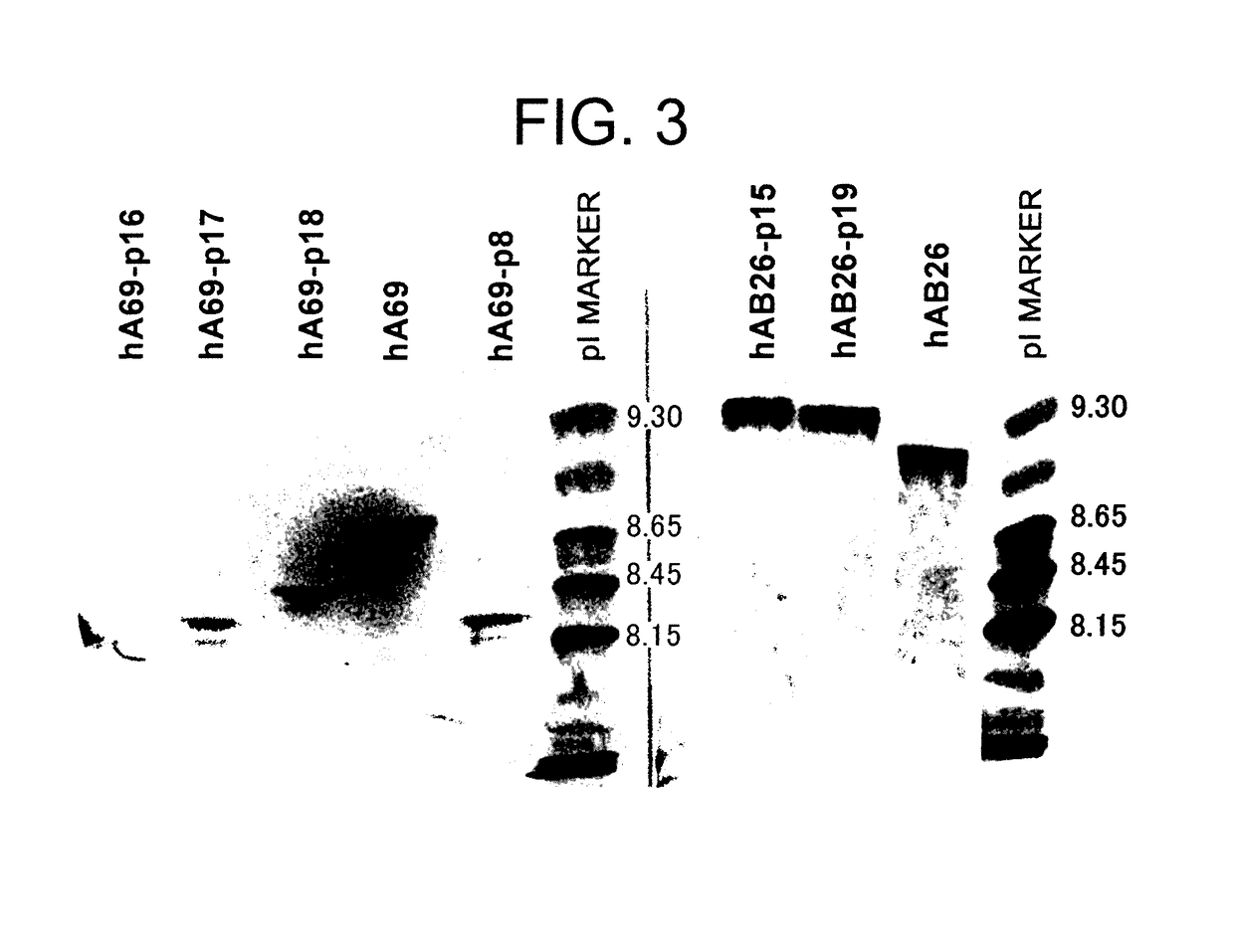Methods of modifying antibodies for purification of bispecific antibodies
a technology of bispecific antibodies and modifying antibodies, which is applied in the field of modifying antibodies for the purification of bispecific antibodies, can solve the problems of difficult application of methods to human pharmaceuticals, low production efficiency, swelling production costs, etc., and achieve the effect of efficiently purifying bispecific antibodies, efficient purifying bispecific antibodies, and reducing antibody function (activity)
- Summary
- Abstract
- Description
- Claims
- Application Information
AI Technical Summary
Benefits of technology
Problems solved by technology
Method used
Image
Examples
example 1
Humanization of Bispecific Antibodies Carrying a Hybrid L Chain
[0189]A bispecific antibody composed of a combination of the anti-Factor IXa antibody A69-VH, anti-Factor X antibody B26-VH, and hybrid L chain (BBA), which was the most effective in shortening the blood coagulation time in Japanese Patent Application No. 2005-112514, was humanized as follows.
1-1. Homology Search of Human Antibodies
[0190]A database was constructed by obtaining amino acid sequence data of human antibodies from the publicly disclosed in Kabat Database (ftp: / / ftp.ebi.ac.uk / pub / databases / kabat / ) and IMGT Database (http: / / imgt.cines.fr / ), and homology search was performed on the database for the mouse A69H chain variable region (amino acid sequence: SEQ ID NO: 19), mouse B26H chain variable region (amino acid sequence: SEQ ID NO: 20), and mouse BBA L chain variable region (amino acid sequence: SEQ ID NO: 21). The results confirmed that they have high homologies to the human antibody sequences below, and it wa...
example 2
Selection of Sites in the Variable Region Amino Acid Modification Positions for Separation of Bispecific Antibodies
[0205]In preparation of a bispecific antibody, when two types of H chains and one type of L chain are used for expression, the following three types of antibodies are expressed: a homodimer of the humanized A69H chain and humanized BBA L chain, a homodimer of the humanized B26H chain and humanized BBA L chain, and a heterodimer of the humanized A69H chain, humanized B26H chain, and humanized BBA L chain. The objective is to purify only the bispecific antibody by separating these three types of antibodies, and thus amino acid modifications were carried out to decrease the isoelectric point of the humanized A69H chain variable region and increase the isoelectric point of the humanized B26H chain variable region.
[0206]First, antibody Fv region models were prepared for the humanized A69 antibody and humanized B26 antibody by homology modeling using the MOE software (Chemica...
example 3
Amino Acid Modifications in the Variable Regions of Humanized Bispecific Antibodies
[0207]Amino acid modifications were carried out at the sites selected in Example 2 to prepare modified antibodies. Specifically, the QuikChange Site-Directed Mutagenesis Kit (Stratagene) was used to introduce mutations into the produced humanized A69 antibody H-chain variable region (hA69a, nucleotide SEQ ID NO: 1) and humanized B26 antibody H-chain variable region (hB26-F123e4, nucleotide SEQ ID NO: 3) according the method described in the attached instruction manual. The H-chain variable region fragment-inserted plasmid was confirmed to have the desired humanized antibody variable region gene sequence, and digested with XhoI and SfiI. Then, the reaction solution was subjected to 1% agarose gel electrophoresis. DNA fragments having the desired size (about 400 bp) were purified using the QIAquick Gel Extraction Kit (QIAGEN) according to the method described in the attached instruction manual, and elut...
PUM
| Property | Measurement | Unit |
|---|---|---|
| pH | aaaaa | aaaaa |
| concentration | aaaaa | aaaaa |
| pH | aaaaa | aaaaa |
Abstract
Description
Claims
Application Information
 Login to View More
Login to View More - R&D
- Intellectual Property
- Life Sciences
- Materials
- Tech Scout
- Unparalleled Data Quality
- Higher Quality Content
- 60% Fewer Hallucinations
Browse by: Latest US Patents, China's latest patents, Technical Efficacy Thesaurus, Application Domain, Technology Topic, Popular Technical Reports.
© 2025 PatSnap. All rights reserved.Legal|Privacy policy|Modern Slavery Act Transparency Statement|Sitemap|About US| Contact US: help@patsnap.com



